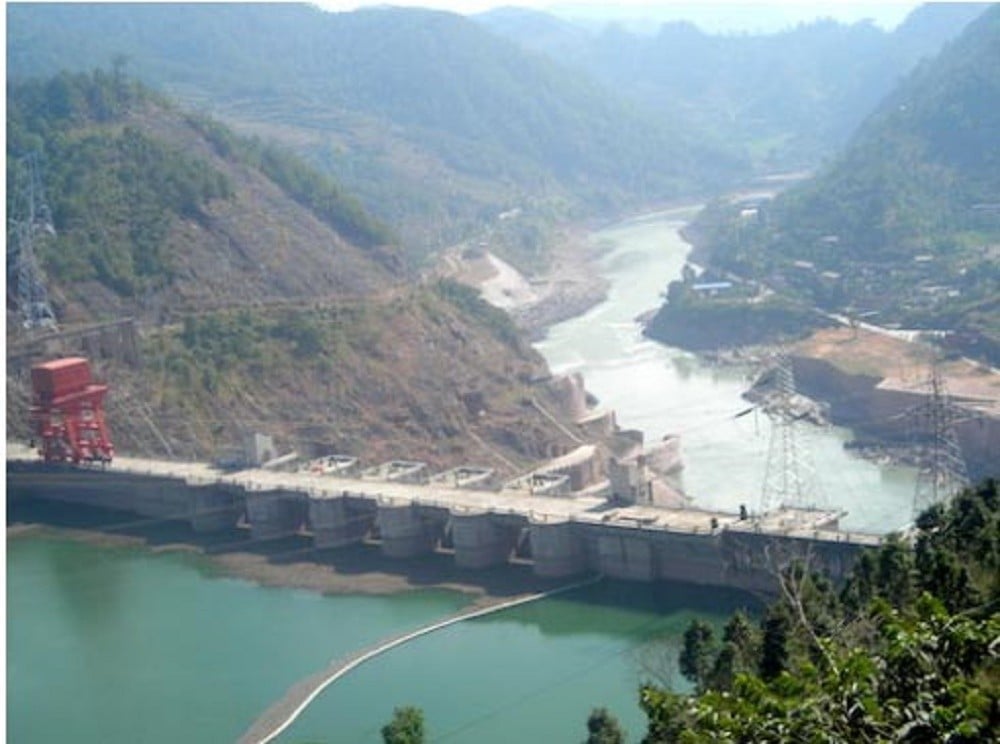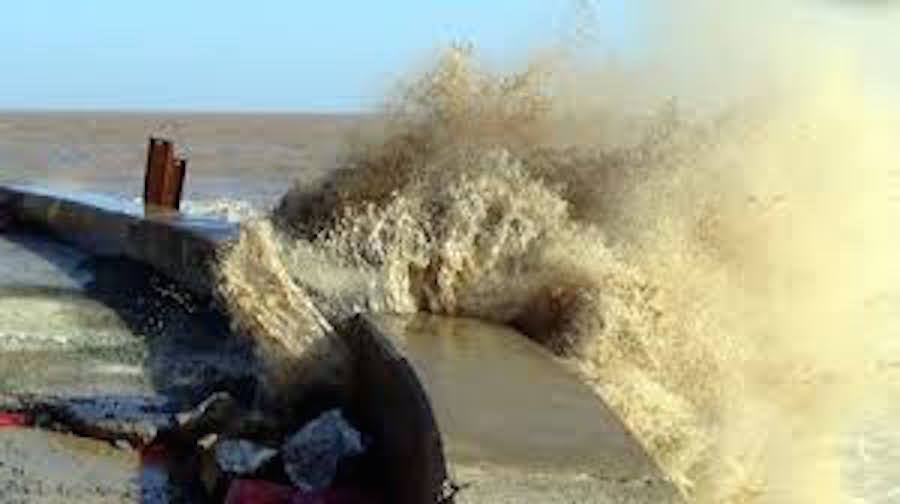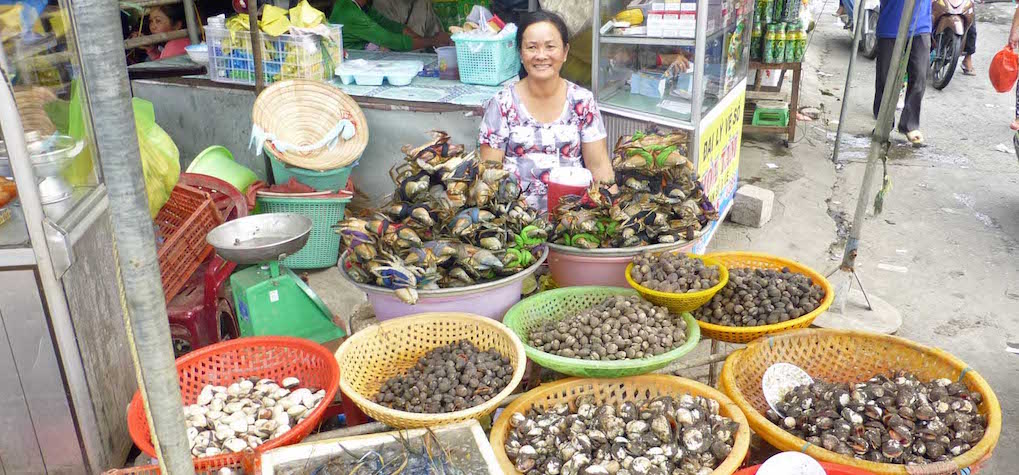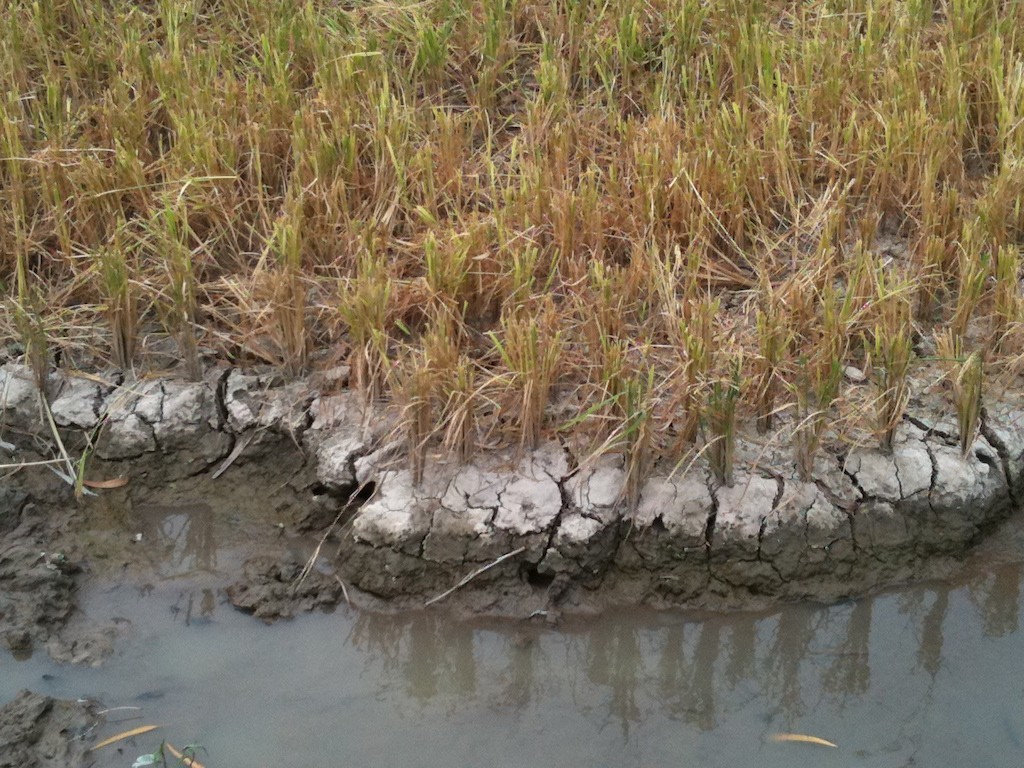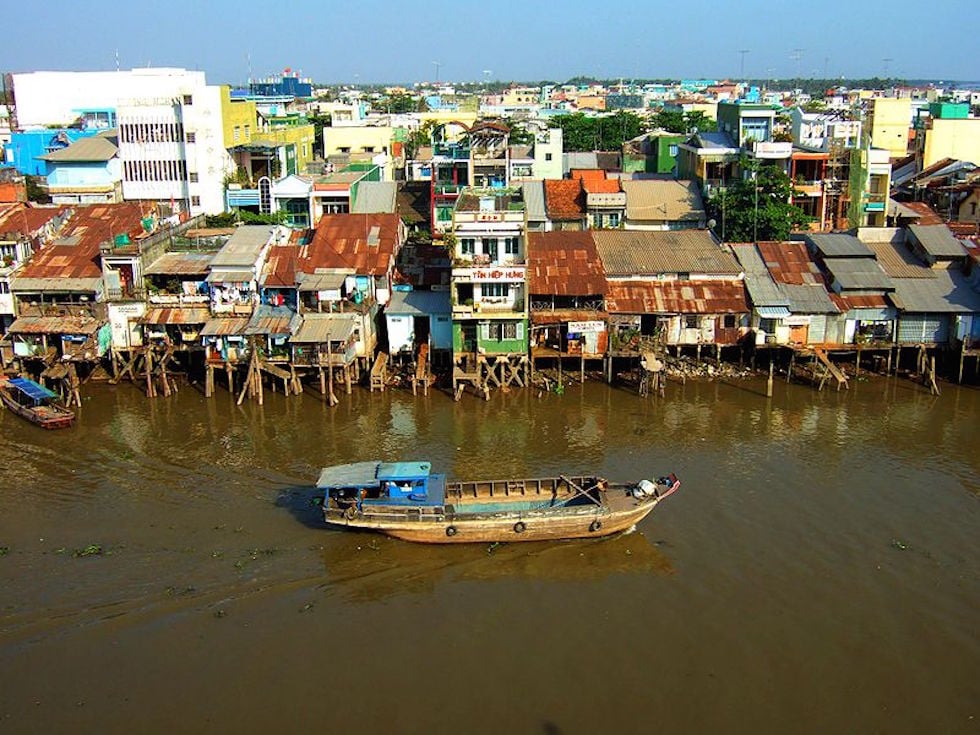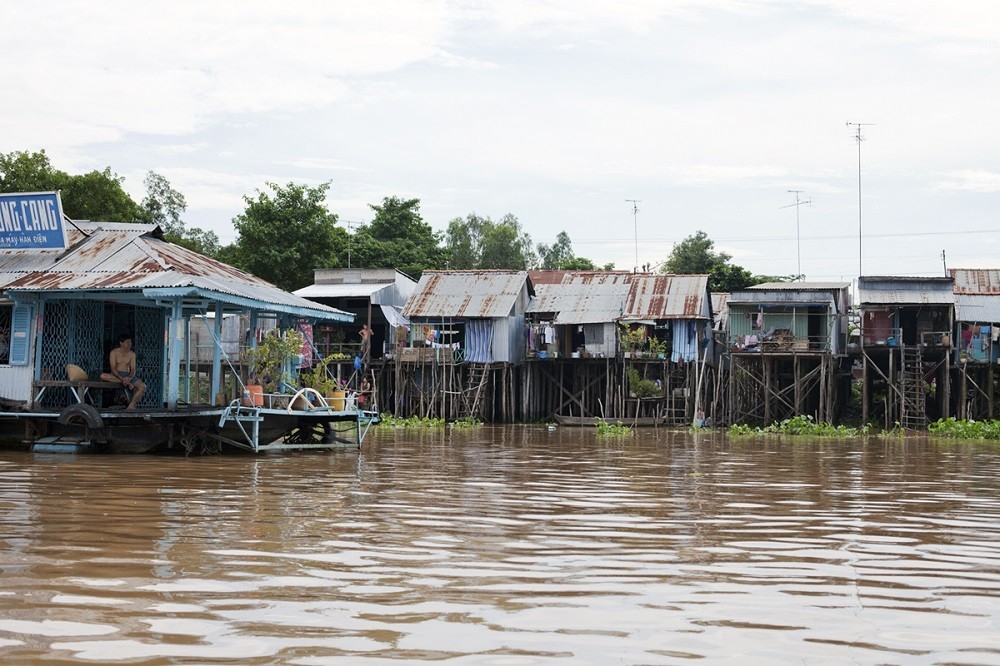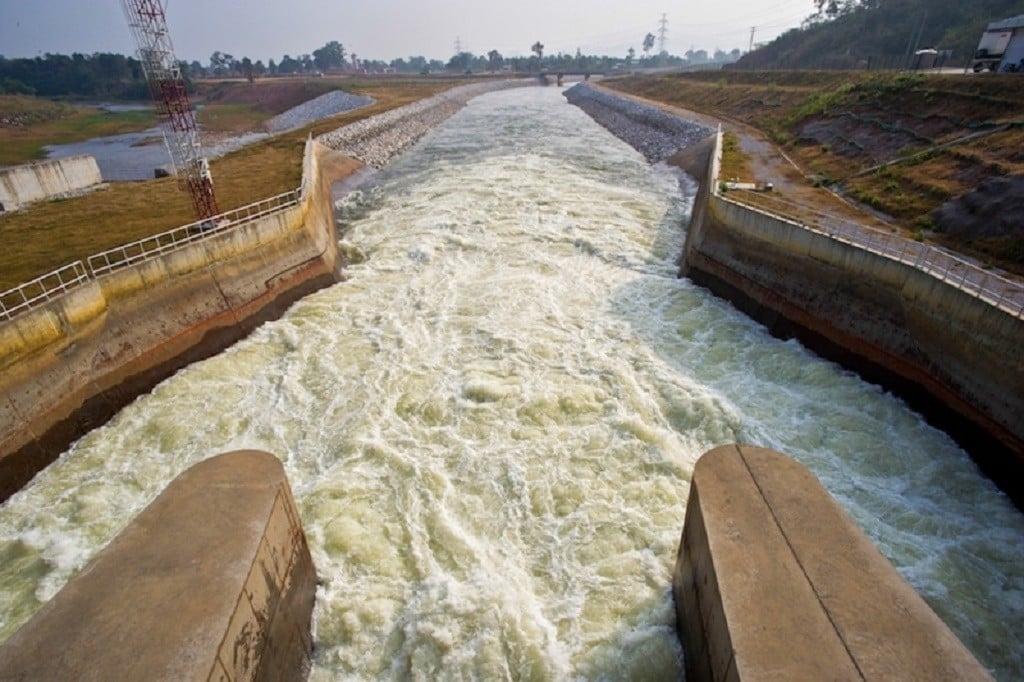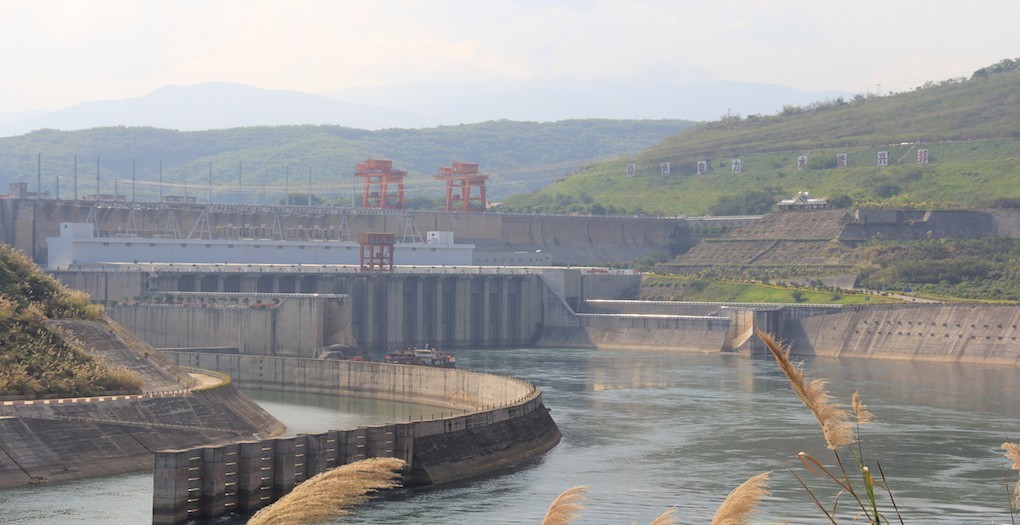Mekong Delta Region (MDR) is the largest rice field of Vietnam now facing the serious drought and water shortage. There are 7 provinces in Mekong Delta region is damaged by salinization. The cause of this situation is the depletion of water supplies by the Mekong River. In order to dealing with this situation, in Hanoi 3 March, 2016, Vietnam Deputy Prime Minister has a working session with the Ministry of Natural Resources and Environment (MONRE), the Mekong River Commission of Vietnam on research impact of hydropower projects on the Mekong mainstream.
Tag: mekong delta
Sea dykes collapse in Mekong provinces
Several sea dyke sections in the Cuu Long (Mekong) Delta provinces of Bac Lieu and Soc Trang have collapsed because of high tides and strong waves.
In Bac Lieu Province, water broke through several sections of Ganh Hao Sea Dyke in Dong Hai District early last month, causing sea water to flow into residential areas.
Nguyen Van Be, who has lived near the dyke for 40 years, said he had never seen such strong waves.
Hydropower dams cause VND5,194,153m in damages to Mekong Delta
Mainstream hydropower projects on the Mekong River caused a loss of VND5,200 billion (USVND5,194,153 million) in seafood and agriculture output to the Mekong Delta, said former Deputy Chairman of National Committee of Science and Technology, Nguyen Ngoc Tran.
The announcement came at a conference on the impact of mainstream hydropower projects on the Mekong River held by Can Tho University’s Research Institute for Climate Change yesterday.
The construction of eleven mainstream hydropower dams caused landslides, ecological imbalance as well adversely impacting local farmers and fishermen in the lower Mekong River region, said Tran.
Vietnam’s Mekong Delta faces most serious drought, salinization in 90 years
Vietnam’s Mekong Delta is facing the most severe drought and salinization in nearly a century, according to the Ministry of Agriculture and Rural Development.
The serious conditions have occurred only once in the last 90 years, the ministry said at the conference in Can Tho City on Wednesday.
Prompt and assertive measures must be applied in order to prevent the heavy damage brought about by drought and salinization in order to ensure the lives and production of local citizens, Deputy Prime Minister Nguyen Xuan Phuc remarked at the meeting.
The deputy premier ordered competent authorities to prioritize a financial support plan for the localities in the delta for speedy approval by the prime minister.
China drives water cooperation with Mekong countries
China is more closely involved in cross-border cooperation on hydropower and water management after the six countries that share the Mekong River signed a landmark agreement late last year.
While more needs to be done between these countries to resolve disputes and encourage transparency over dam building and shared water management, the agreement signals a greater willingness to discuss areas of discord that have soured relations in the region in the past.
During their meeting in in China’s southern province of Yunnan in November 2015, the foreign ministers of China, Myanmar, Laos, Thailand, Cambodia, and Vietnam launched the Lancang-Mekong Cooperation Mechanism (LMCM), an initiative pitched at the November 2014 Summit Meeting between China and the Association of Southeast Asian Nations (ASEAN) in Naypyidaw, Myanmar.
Author Q&A: How communities struggling with climate and development are “Living with the Mekong”
The richly illustrated book Living with the Mekong provides readers with insights into urban developments in one of the world’s most threatened deltas. According to the author, the book gives a personal account of “how Vietnam and the Vietnamese people cope with the consequences of climate change.” Joep Janssen, a Dutch urban delta expert, travelled through the Mekong Delta and Ho Chi Minh City area researching the impacts of climate change and development on farmers and urban inhabitants. The Mekong Eye talked to Joep, via email, about urbanization, climate change, development, and how decision makers in the Mekong region might learn from the Dutch experience.
Mekong Delta’s alluvium levels fall as more water reservoirs are built
Vietnam Net A series of water reservoirs in the upper course of Mekong River could lead to a loss of 90 percent of alluvium in Vietnam’s Mekong River Delta. According to Ho Long Phi from the HCM City National University’s Water Management and Climate Change Center, the flow and sediment in the delta depends on […]
300,000 Vietnamese coastal residents seriously threatened by forest loss-triggered erosion
Thousands of households along the coast of Tien Giang Province in the Mekong Delta have been seriously endangered by soil erosion caused by the loss of protective forests.
Since the strip of protective forest, 21 kilometers long, covering the coast of Go Cong District has been ruined, around 300,000 locals and 55,000 hectares of farming land there have been “put under a knife blade” for years.
Houses in the coastal area from the Soai Rap River mouth in Vam Lang Town to Den Do in Tan Thanh Commune are under permanent threat and may be swept away or sunk by erosion any time.
A sea dike of steel concrete was built along the coast to protect local residential areas but it is just a temporary measure since sea waves have continued to encroach on land day by day.
In the Mekong Delta: Erosion, Pollution, and Millions of Shrimp
“Wrong way!” Stephen, our driver, shouted at Pablo through the rolled-up window of his 4×4. We had jumped out of the car to take a ferry across the Mekong to the toothbrush-shaped island of Phu Thanh, and apparently Stephen was unimpressed with our door-closing technique. Heedless of the swarms of motorcycles flowing around the vehicle, he engaged the handbrake and got out himself to demonstrate the proper method.
Opening the door and quickly slamming it with exaggerated force, he pointed accusingly at Pablo. “Wrong way.”
Once more he pulled the door open, smiling as he gently closed it with a barely audible click. “Right way.”
How social can Chinese hydropower dams be?
How dam construction companies deal with the social and environmental impacts of their projects comes down to more than just their own policies, write Johan Nordensvard and Frauke Urban.


